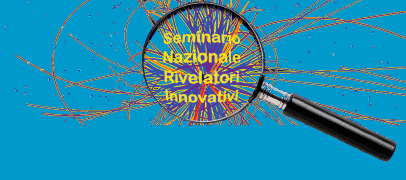Neutron detectors
Francesco Sacchetti
The detection of neutrons is a special case of neutral radiation detection because the energy transfer from neutron to matter should be based mainly on nuclear reactions and there is the need to detect neutrons also with very low kinetic energy. In addition, the production of neutrons has a high energetic cost and the source are practically always "white" sources. In recent time the detection of neutrons became important also for the so called "homeland security" because there is the need for controlling the un-authorized transport of fissile materials. In this presentation, after a brief recall of the basic neutron detection reactions, the available technology of neutron detection is discussed from the primary event to the data acquisition. Special attention is devoted to the presentation of the technology of 3He detectors which dominated the last forty years.
The lack of the availability of this isotope on the international market is discussed and the proposed alternatives and their limits are considered. The options offered by the new technologies are also considered looking at the different applications in physics research (e.g. nuclear physics and fusion research) and at the use of neutron scattering for condensed matter studies where there is a complex need for high spatial resolution detectors and large area detectors with good time resolution and large dynamic range.
The capability of the neutron detectors in detecting "real" neutron signals against those due to gamma-rays is also discussed.
Finally a look at the hypothetical new detection approaches is briefly considered to allow for more cost effective solutions and more flexible designs.
The lack of the availability of this isotope on the international market is discussed and the proposed alternatives and their limits are considered. The options offered by the new technologies are also considered looking at the different applications in physics research (e.g. nuclear physics and fusion research) and at the use of neutron scattering for condensed matter studies where there is a complex need for high spatial resolution detectors and large area detectors with good time resolution and large dynamic range.
The capability of the neutron detectors in detecting "real" neutron signals against those due to gamma-rays is also discussed.
Finally a look at the hypothetical new detection approaches is briefly considered to allow for more cost effective solutions and more flexible designs.
| Francesco Sacchetti is full professor of Solid State physics at the University of Perugia where he is working since 1983 after having worked as researcher at CNEN and at CNR. He has been involved in the last forty years in theory of condensed matter and in the development of neutron scattering in Italy as well. He has been responsible for several instrumentation developments at the major European neutron sources. More recently his interest has been devoted to the study of THz atomic dynamics in liquid metals as prototypes of interacting Fermi liquids, to the application of new neutron based techniques to the life science and also to the use of neutrons in some basic aspects of quantum mechanics, e.g. Hambury-Brown and Twiss like experiments and Bell's theorem related experiments. |
|

